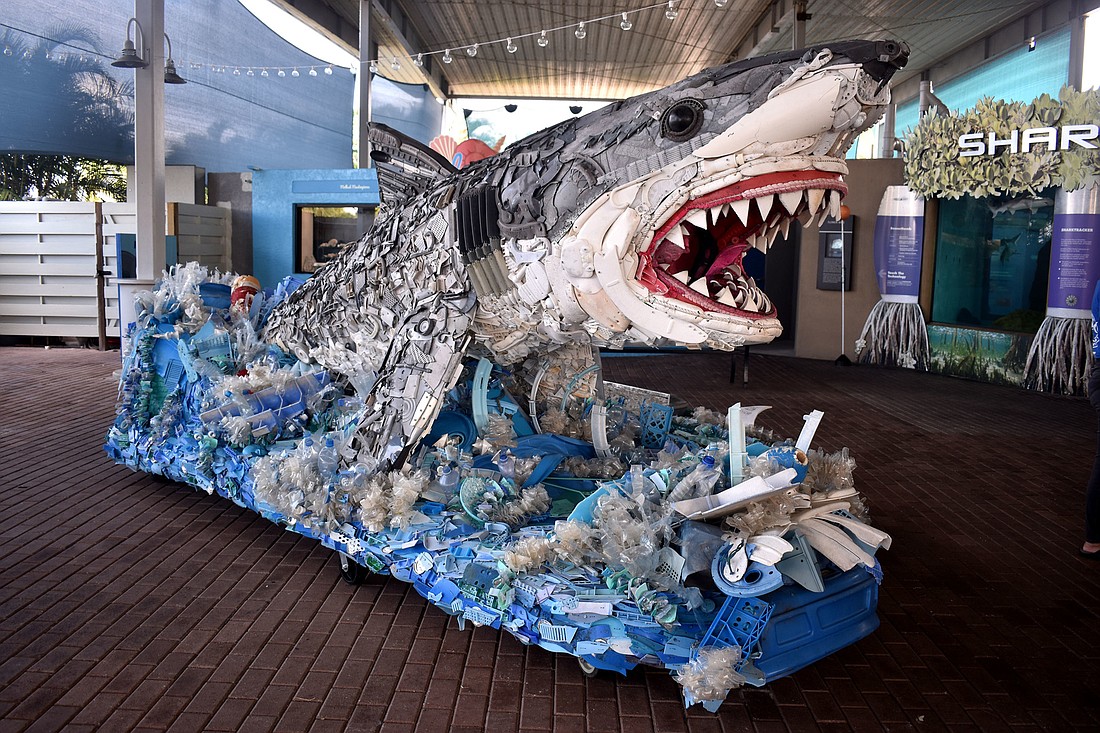- December 22, 2024
-
-
Loading

Loading

In 2015, Mote Marine Laboratory scientists conducted necropsies on 142 sea turtle hatchlings after they had been washed back ashore and didn’t survive.
Of those 142 hatchlings, 72% of them had plastic in their gastrointestinal tracts.
It’s this reason, among many others, why Mote’s new exhibit, 'Sea Debris: Awareness through Art,' featuring Washed Ashore, is so important.
The exhibit, which makes its on Saturday, Dec. 9, features seven handmade sculptures all made completely out of sea debris, a lot of it plastic.
Broken plastic pieces are the most common found trash item on beaches. But, Executive and Artistic Director and lead artist for Washed Ashore Angela Haseltine Pozzi is hopeful that the plastic problem won’t last forever.
“If we can create plastic, we can create something new,” she said.
Mote scientists are hoping the exhibit will start a conservation conversation, and Haseltine Pozzi hopes that conversation hits young minds.
“I hope the conversation hits those innovative minds that will help us get out of this situation,” Hasletine Pozzi said.
The sculptures are all handmade by Washed Ashore artists. The Oregon-based nonprofit organization creates the sculptures made with trash found on the Oregon coastline. Haseltine Pozzi said the group works with thousands of volunteers who pick up the trash used in the pieces.
Since the organization’s inception seven years ago, volunteers have collected 21 tons of trash.
Haseltine Pozzi said she is hoping this exhibit will make people realize fish and other marine animals eat the trash left on beaches and in oceans.
“I hope it wakes people up to realize we use plastic every day and there are some things we don’t need to be using, like water bottles,” Haseltine Pozzi said.
The seven sculptures will be scattered throughout Mote’s campus, so it provides an experience for aquarium visitors throughout their entire visit. Some sculptures are interactive. A jellyfish sculpture, made mostly out of plastic bottles, hangs from the ceiling and allows visitors to move its tentacles. And one of them, Greta the Great White Shark, which is situated next to Mote’s shark tanks, has a built in seat for people to sit in for photos.
Greta is made of items such as a toy car bumper, a shovel, beach toys, face masks, lighters and bottle caps. Some of her teeth are made out of toilet seats. All together, she weighs near 1,500 pounds.
Another sculpture, which is not interactive, is made entirely out of styrofoam, a material some marine animals eat because of its resemblance to their normal diet.
“Styrofoam pieces look like fish eggs,” Haseltine Pozzi said.
During a media preview of the exhibit, Mote scientists were on hand with examples of sea debris that harms marine animals. Kim Bassos-Hull, a senior biologist with Mote’s Sarasota Dolphin Research Program had a bag full of bottle caps with her as well as items she found in only five minutes on a St. Augustine beach.
“It creates a wow factor,” Kim Bassos-Hull, a senior biologist with Mote’s Sarasota Dolphin Research Program said. “People think about where it came from.”
The exhibit will be on display until June 15, 2018. The exhibit will be on display during Mote's regular hours, 10 a.m. to 5 p.m. every day and is free with Mote admission.